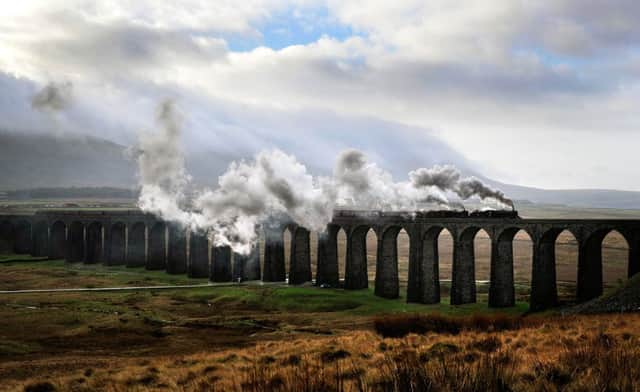David Behrens: Railway saga shows us why our landscape is worth fighting for


This is as true today as it ever was, as can be seen from the price of property in the most attractive spots.
It is the geography that sets it apart. You can stand in the centre of Bradford and see hills in the distance. Between the two lie miles of changing landscape: urban sprawls punctuated by winding, country lanes.
Advertisement
Hide AdAdvertisement
Hide AdIt is the punctuation that’s the important part. This is the green belt that prevents the towns and suburbs from merging into one, and its presence is all too easily taken for granted.


Manchester, where I spent my first 18 years, has no such diversity. You can drive for 30 minutes from Deansgate and get no further than Cheetham Hill, where the topography is a tree with railings around it. The entire region is an unbroken ribbon of red brick and pebbledash, and you have to go south to Cheshire, or east to the Pennines, before the monotony is interrupted. No-one ever aspired to live in Blackley. Most people have moved away before they even realise it’s pronounced Blakeley.
The difference in Yorkshire is something we ought to celebrate more than we do. But instead, we are forced, every few years, out to the barricades to defend its continued existence.
The front line is currently in Sheffield, where the council is being accused of obfuscating over politically sensitive plans to build thousands of homes on its green belt, while brownfield sites ripe for development go begging.
Advertisement
Hide AdAdvertisement
Hide AdThe West Yorkshire green belt, too, is being tightened, notch by notch, as planners nibble away at its edges in the scramble to build new homes in areas where they will be easiest to sell, even at premium prices.
It is short-sighted on many levels. The infrastructure in many of these areas is already stretched – their roads gridlocked and their schools oversubscribed – yet planners seem torn between their responsibility to the communities there and the demands of developers concerned only with profit margins.
So, too often, they pursue a policy of spoiling what is good, rather than reclaiming what isn’t.
Yorkshire’s most spectacular reclamation project celebrated its 30th anniversary this week. This was not a building plot but a railway, the 73-mile green belt that snakes from Settle in the Dales, over the mighty Ribblehead Viaduct and on to Carlisle.
Advertisement
Hide AdAdvertisement
Hide AdIt is the country’s most scenic line, yet the nationalised British Rail had written it off. There was a groundswell of local opposition. Campaign groups were formed, and eventually they won the support of the then Transport Minister, Michael Portillo, who had to take on his boss, Margaret Thatcher, to force a rethink.
It brought Mr Portillo a useful second career, travelling the world’s other notable train lines for the entertainment of viewers to BBC2 – but the wider benefit is to the communities between Settle and Carlisle. We learned this week that 16,000 lorry journeys have been avoided in the last three years alone because limestone can still be transported on goods trains from the quarries of Upper Wharfedale.
The line was saved for generations to come by a willingness among campaigners and policymakers to push against the grain. That same mindset ought to drive every planning decision in the county, but it seldom does. Expediency nearly always wins out.
The areas of urban Yorkshire that creative planning might now reclaim include those created by the discredited decisions of past decades, yet the process today is no more transparent than it was then. When planners encounter a brick wall, they tend to react by accusing those behind it of nimbyism, as if defending one’s community is necessarily selfish.
Advertisement
Hide AdAdvertisement
Hide AdWere the campaigners who saved the Settle to Carlisle line also nimbys? Hardly. They were forward thinkers who pushed the bounds of what is politically possible and left a legacy that benefits us all today.
If Yorkshire’s unique patchwork is to remain for another 30 years, it needs more such visionaries.